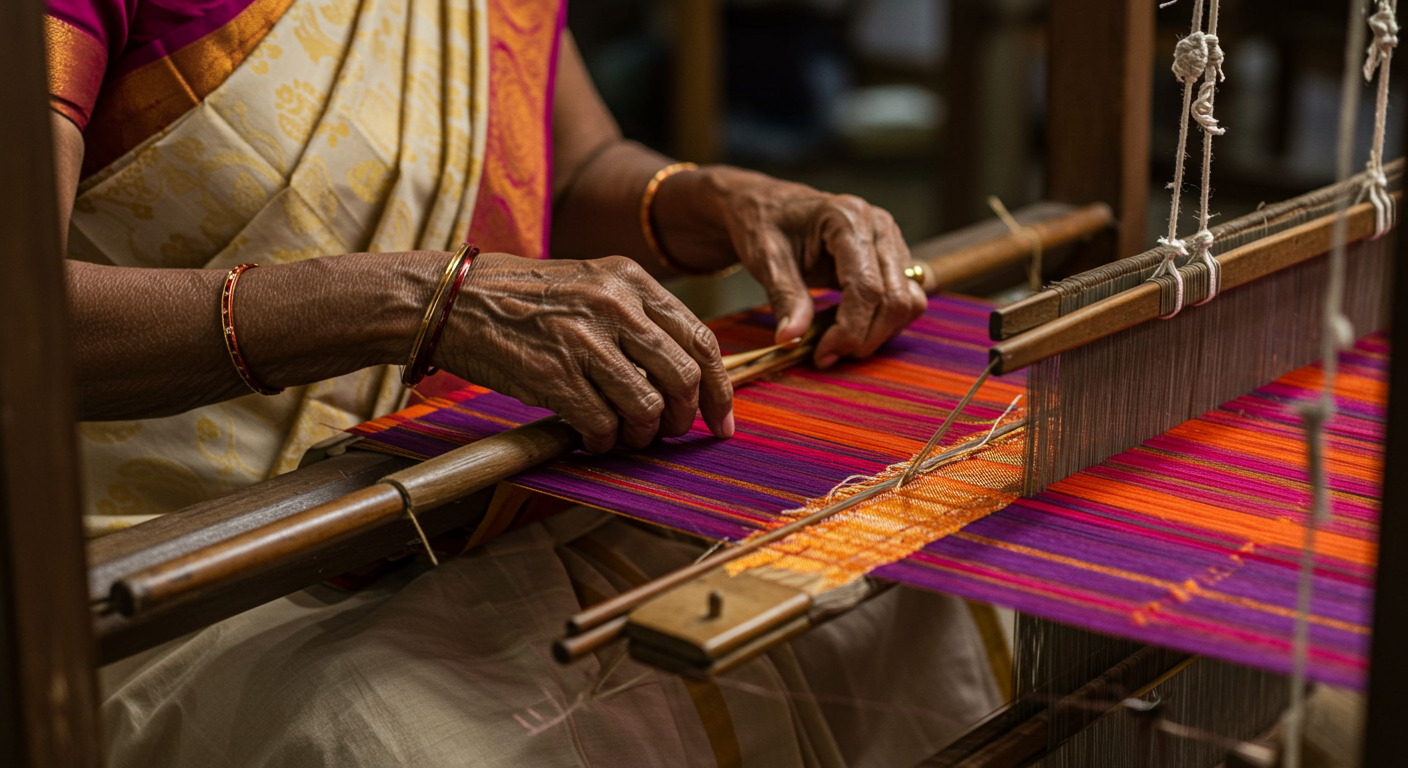Now Reading: The Timeless Elegance of Handmade Sarees: A Journey Through Craftsmanship
- 01
The Timeless Elegance of Handmade Sarees: A Journey Through Craftsmanship
The Timeless Elegance of Handmade Sarees: A Journey Through Craftsmanship

The Allure of Handmade: Beyond Mass Production
In a world dominated by fast fashion and mass-produced goods, the allure of handmade sarees lies in their uniqueness and artistry. Each saree tells a story, woven with passion and dedication by skilled artisans. Unlike machine-made sarees that lack individuality, handmade sarees embody a rich heritage and a commitment to sustainable craftsmanship.
The process of creating a handmade saree is a labour of love, involving numerous intricate steps. From sourcing the finest quality raw materials like silk, cotton, or linen to the meticulous dyeing and weaving processes, every detail is carefully considered and executed. The result is a garment that exudes elegance, sophistication, and a timeless appeal that transcends fleeting trends.
Choosing a handmade saree means supporting artisans and preserving traditional crafts. It’s an investment in a piece of art that will be cherished for generations. It’s a statement that you value quality, craftsmanship, and ethical production over fleeting trends.
A Tapestry of Techniques: Weaving Traditions Across India
India boasts a diverse tapestry of weaving traditions, each region renowned for its unique techniques and motifs. From the intricate Kanjeevaram silks of Tamil Nadu to the vibrant Banarasi brocades of Uttar Pradesh, the handloom sector is a vibrant testament to the country’s rich cultural heritage.
Ikat, a resist-dyeing technique, creates mesmerizing patterns on sarees from Odisha and Gujarat. Bandhani, another resist-dyeing method, produces intricate tie-and-dye designs popular in Rajasthan. Jamdani, a supplementary weft technique, creates delicate floral and geometric patterns on sarees from West Bengal. Each technique requires years of dedicated training and skill to master, passing down through generations of artisans.
The beauty of handmade sarees lies not just in their aesthetic appeal, but also in the preservation of these time-honoured traditions. By purchasing a handmade saree, you are directly contributing to the sustenance of these crafts and the livelihoods of the artisans who dedicate their lives to their art.
The Magic of Materials: Silk, Cotton, and Beyond
The choice of material plays a crucial role in the overall look and feel of a handmade saree. Silk, renowned for its lustrous sheen and luxurious texture, is a popular choice for special occasions. Cotton, prized for its breathability and comfort, is ideal for everyday wear. Linen, with its natural drape and sophisticated appeal, is gaining popularity as a sustainable and stylish option.
Beyond these common materials, artisans also experiment with other fibres like Khadi (hand-spun cotton), Tussar silk (wild silk), and blends of different yarns to create unique textures and designs. The dyeing process, often using natural dyes derived from plants, flowers, and minerals, further enhances the beauty and individuality of the saree.
Understanding the characteristics of different materials allows you to appreciate the craftsmanship and choose a saree that suits your personal style and occasion. Consider the weight, drape, and texture of the fabric when selecting your perfect handmade saree.
No products found.
Caring for Your Handmade Treasure: Ensuring Longevity
A handmade saree is a valuable investment that deserves proper care to ensure its longevity and beauty. Dry cleaning is generally recommended for silk sarees to prevent damage to the delicate fibres. Cotton and linen sarees can be hand-washed gently with a mild detergent. Avoid using harsh chemicals or bleach, as these can fade the colours and weaken the fabric.
Store your sarees in a cool, dry place away from direct sunlight to prevent discoloration. Wrap them in muslin cloth or cotton bags to protect them from dust and insects. Avoid hanging heavy sarees for extended periods, as this can stretch the fabric. Folding them neatly and storing them flat is the best way to maintain their shape.
With proper care and attention, your handmade saree will remain a cherished heirloom for generations to come. Invest in quality storage solutions and cleaning products to protect your investment and ensure that your saree retains its beauty and value.
Handmade Sarees: A Sustainable and Ethical Choice
In an age of increasing environmental awareness, choosing a handmade saree is a sustainable and ethical choice. The handloom sector relies on traditional techniques that minimize environmental impact. Artisans often use natural dyes and eco-friendly materials, reducing the reliance on synthetic chemicals and industrial processes.
By supporting handmade sarees, you are also contributing to the economic empowerment of artisans and their communities. Fair trade practices ensure that artisans receive fair wages and work in safe and dignified conditions. Choosing a handmade saree is a conscious decision that benefits both the environment and the people who create these beautiful garments.
Make a statement with your wardrobe and embrace the beauty of handmade sarees. Support sustainable craftsmanship, celebrate cultural heritage, and own a piece of art that tells a story.
No products found.













